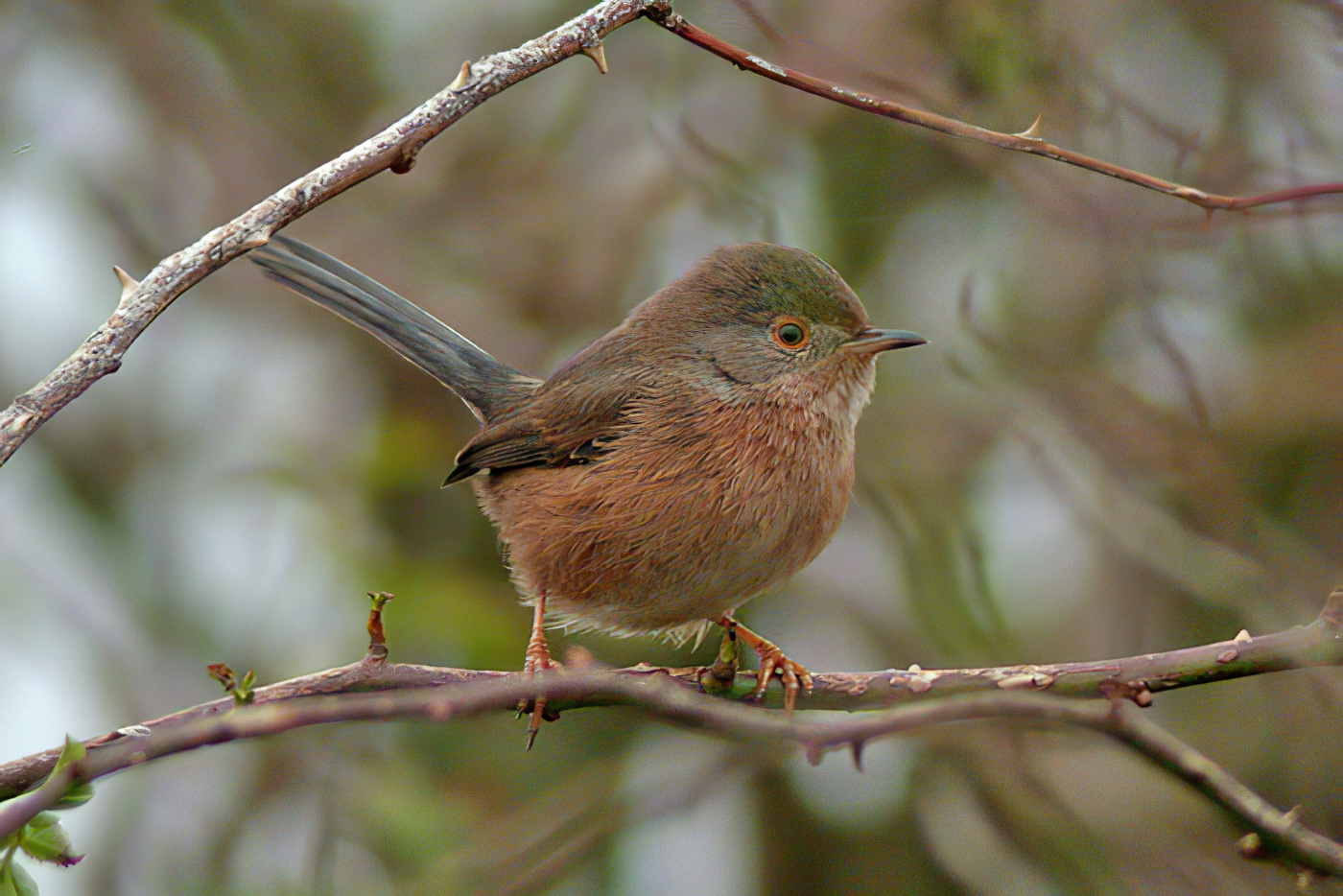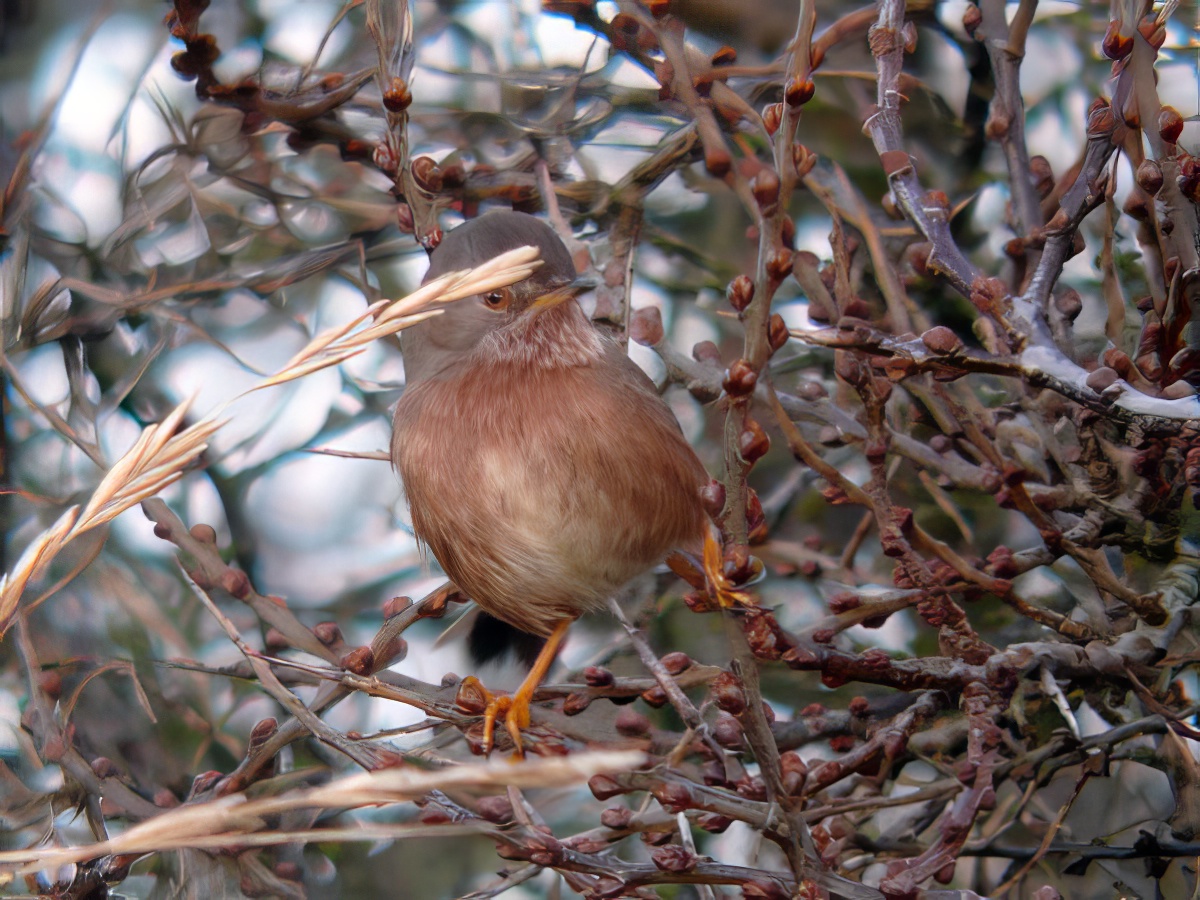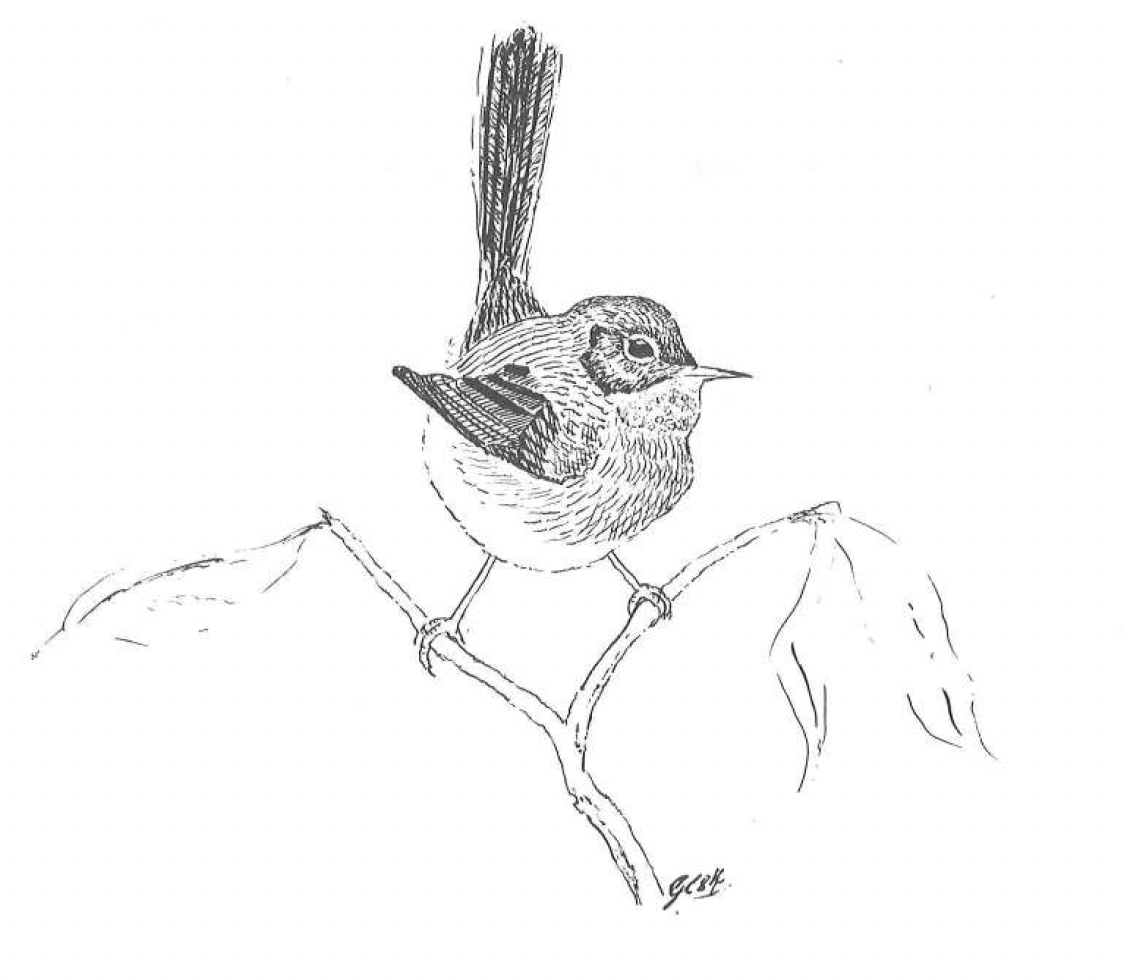Dartford Warbler Sylvia undata
Vagrant. Southern and eastern England and southern Europe.


Dartford Warblers at Gibraltar Point NNR: left, October 31st 2004 (Michael Tarrant); right, January 27th 2008 at (Russell Hayes).
Despite a relatively healthy British breeding population of this delightful heathland warbler it remains a county vagrant with only four records, albeit the three most recent birds were all long stayers at Gibraltar Point NNR. The first record was of a male bird trapped at Tetney in June 1984 and this showed characteristics of the Mediterranean race S.u. undata. The bird that over-wintered in 2004-05 was a 1CY male when it arrived in October 2004 and the female/immature in November 2007 frequented Rock Ridge, the same area as the bird in 2004-05. A female/immature was found in November 2009 at the very northern end of Gibraltar Point NNR and stayed into February 2010. There have been no more records.
The British breeding population has had its ups and downs. In 2006 a national breeding survey reported that 3214 territories had been located, an increase of 70% since the previous survey in 1994. This figure fell to a recent all-time low in 2011 when just 530 territories were found, a crash thought in large part to be due to severe winter weather in 2008-09 and 2009-10. Since then the population has gradually recovered to 819 territories in 2014, doubled to 1677 in 2015, but falling back to 1148 in 2018 (Holling in litt.). Whether the next county record will be a vagrant from the Mediterranean or a dispersing British juvenile remains to be seen.
| Site | First date | Last date | Count | Notes |
| Tetney | 02/06/1984 | 03/06/1984 | 1 | 2CY male, very grey mantle consistent with the nominate race undata which breeds in the Mediterranean |
| Gibraltar Point NNR | 31/10/2004 | 19/12/2004 | 1 | 1CY male |
| Gibraltar Point NNR | 30/01/2005 | - | 1 | Same bird, now 2CY |
| Gibraltar Point NNR | 03/02/2005 | - | 1 | Same 2CY bird |
| Gibraltar Point NNR | 29/11/2007 | 27/01/2008 | 1 | Immature/female bird on Rock Ridge |
| Gibraltar Point NNR | 28/11/2009 | 17/02/2010 | 1 | Same immature/female bird on Rock Ridge |
Dartford Warbler at Tetney, June 2nd-3rd 1984, first county record.
by Howard Bunn
Circumstances
During the afternoon of June 2nd, 1984, a small, slightly built Sylvia warbler was flushed from Hawthorn scrub along the sea embankment at Tetney. Due to its extremely secretive behaviour and the transient view, and suspecting one of the rarer Sylvia warblers, a mist net was erected, and the bird subsequently trapped. The bird proved to be a Dartford Warbler, probably a first year male, and it remained within the vicinity of the capture area until the following day. Although still elusive, it was seen to make a short flight out onto the saltmarsh, showing its appreciably longer tail when compared to others in the genus, which was cocked up when perched.

After consulting the literature, and with the understanding that some continental populations of normally sedentary species are far more prone to wandering or even regular winter movements, it seems most likely that the bird in question was of Continental origin. Despite the intergradation between Dartford Warbler populations, this bird showed a very characteristic grey mantle, and is therefore, assigned to the nominate subspecies S. u. undata. It is interesting to note that the first Scottish record of this species in Spring 1983 showed the same mantle colouration as the Tetney bird. This bird arrived with several southern vagrants and was also thought to be of the nominate race. In addition, this preceded the first record for Sweden by three days, which strongly suggests that the Scottish record did not involve a bird of British origin.
Description (in the hand)
Upperparts: mantle, scapulars, and rump dark slate grey with a brownish wash; crown slightly lighter grey and lacking any brown pigment. Tail black, very abraded, showing white only on outer fringe of lower third of outermost tail feathers. Clear fault barring across all retrices. Remiges and coverts uniform dark greyish-brown, although pale wing panel formed on closed wing due to very worn secondary edges. Small white patch on carpal covert.
Underparts: dull burgundy throat, breast, and flanks, extending partly onto undertail coverts. White centre to belly and white tips to throat feathers giving a spotted effect. Undertail grey with silvery outer tail feathers, whiter on outer web.
Soft parts: upper mandible and last third of lower mandible blackish; basal two thirds of lower mandible flesh coloured (looked more yellowish in the field), tarsus orange-brown. Reddish iris with conspicuous brick red eye ring.
(Updated with reference to the new Birds of Lincolnshire (2021) November 2022)

